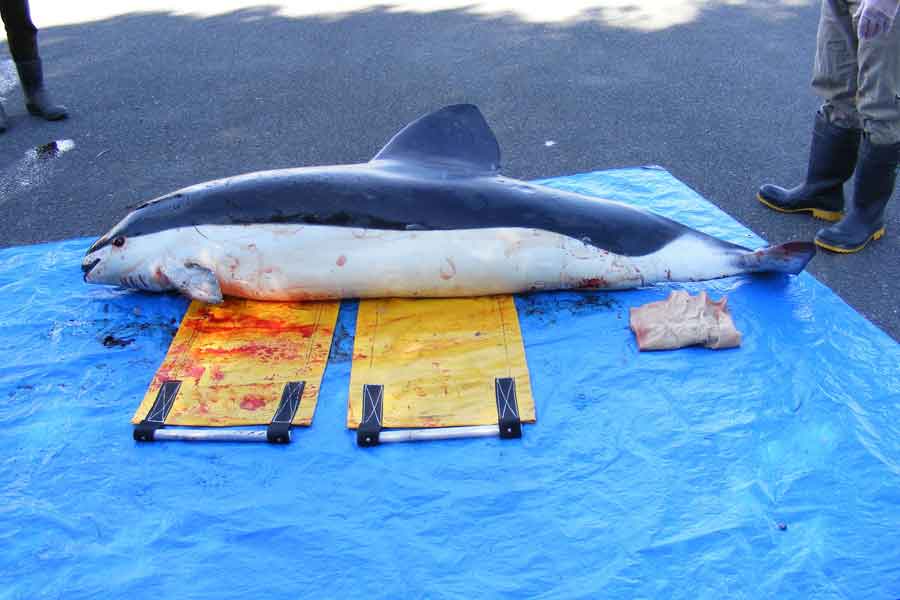
Often, humans have more information about the surface of the moon than about the depths of the sea. It may seem incredible, but even today, there are many ocean animals that we know very little about.
An example of this is the spectacled porpoise, which was first described in 1912 by Lahille. By 1975, only eight specimens were known to exist. Currently, there are about two hundred individuals known, most of which have been found dead on the beaches of Tierra del Fuego in an advanced state of decomposition. However, there are only a few records of live encounters with these animals in the Drake Passage, and there is no truly illustrative photograph of these rare encounters.
They have a maximum length of around 2.20 meters and weigh approximately one hundred kilograms. They have a shiny black color on the upper part and white on the lower part. Their name comes from the black spots surrounding their eyes, which give them a spectacle-like appearance. It is believed that they feed on cephalopods and fish, but so far, no examination of their stomach contents has been conducted.
Another example occurred in June 1986, on a beach in Juan Fernández Island, west of Chile (which became famous because Alexander Selkirk, the inspiration for the novel Robinson Crusoe, lived there). A strange skull was found, and after careful study, experts named the new species «Bahamonde’s beaked whale.» Although it is believed to be not extinct, no one has seen any living specimens of this cetacean. We should prepare our cameras and stay alert to help scientists unravel the mysteries of this ever-surprising nature.
«You cannot defend what you do not love, and you cannot love what you do not know.»

